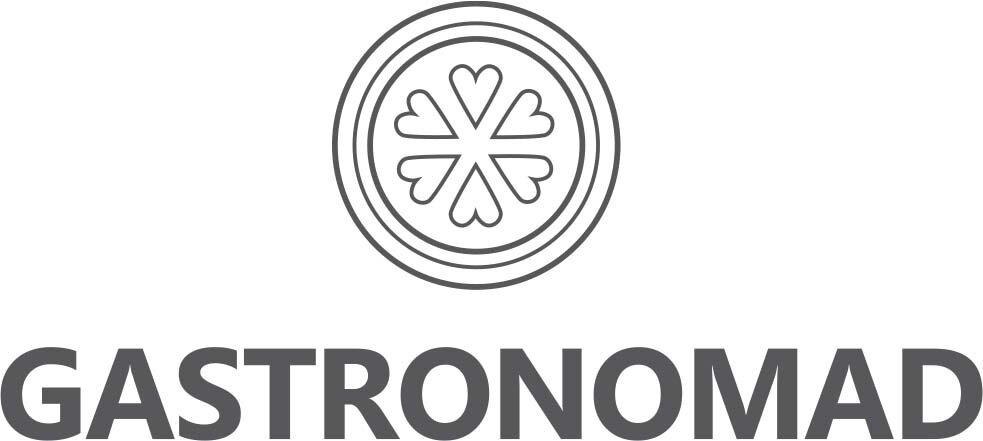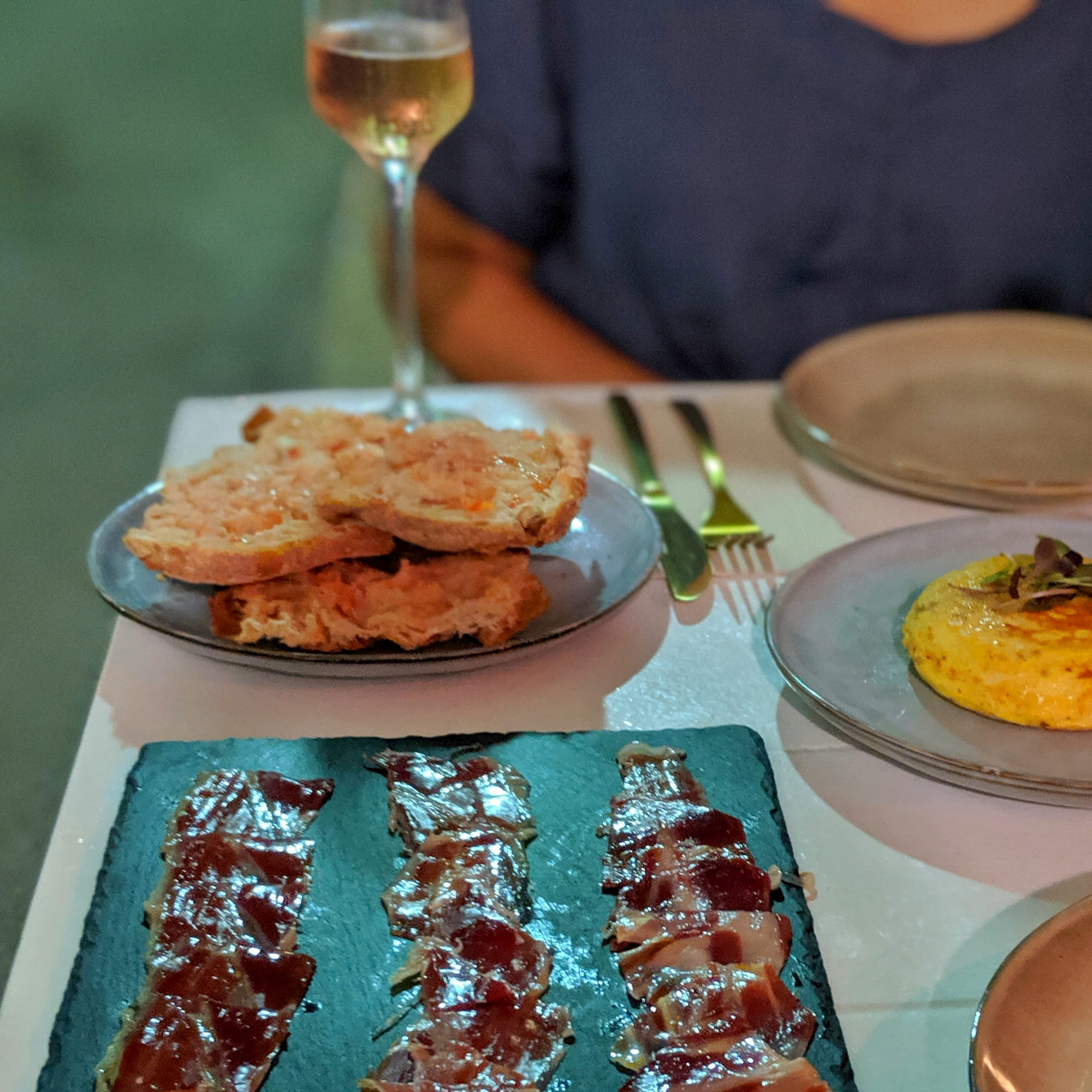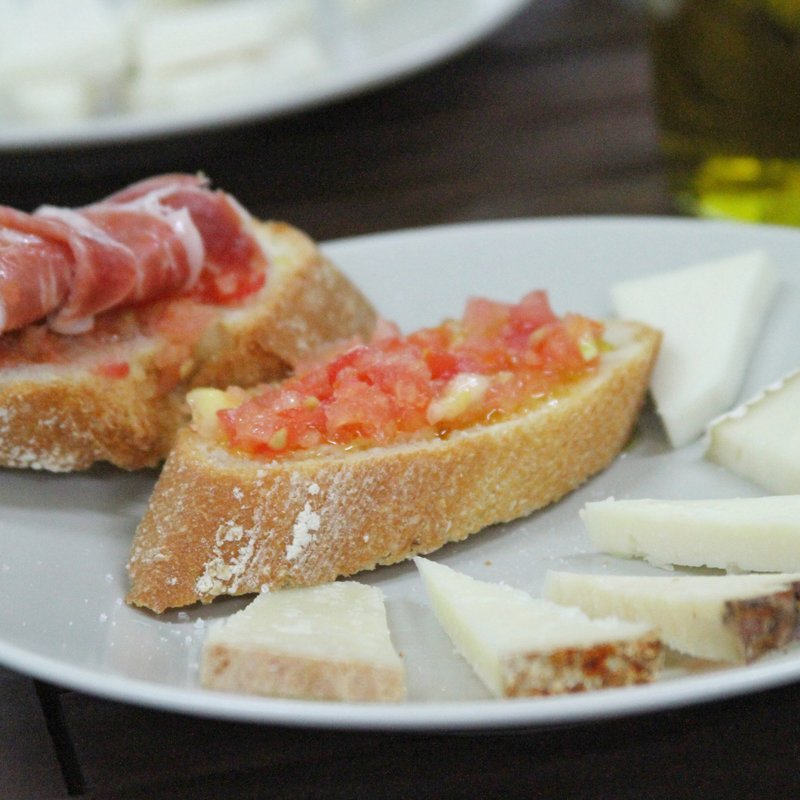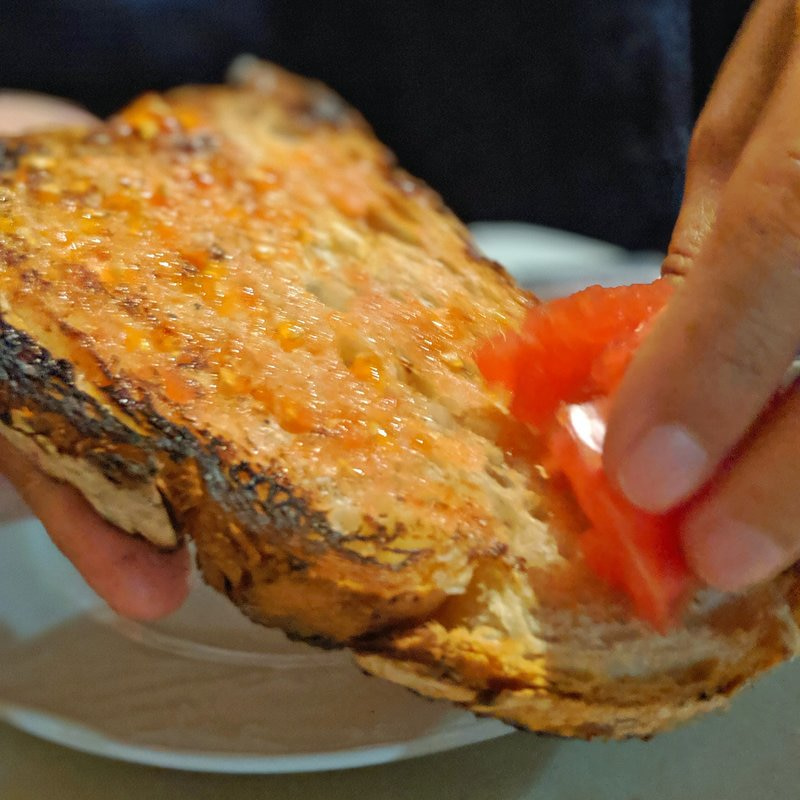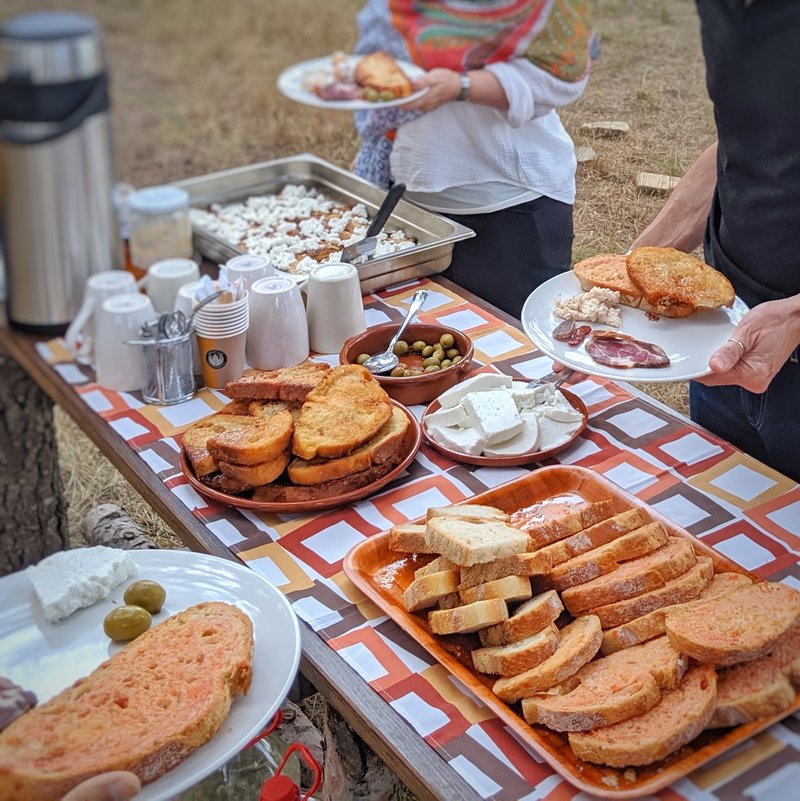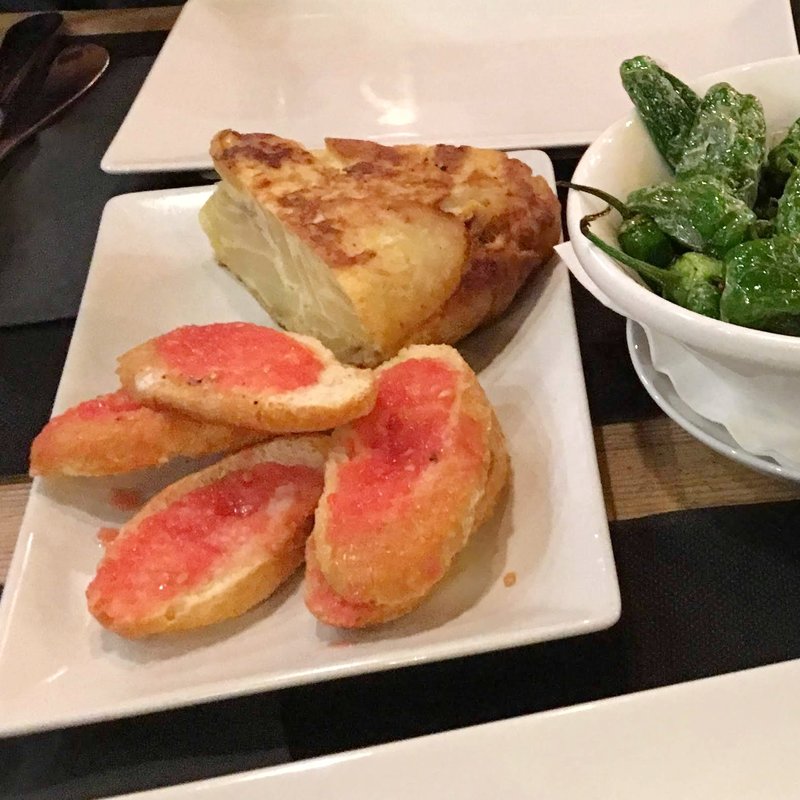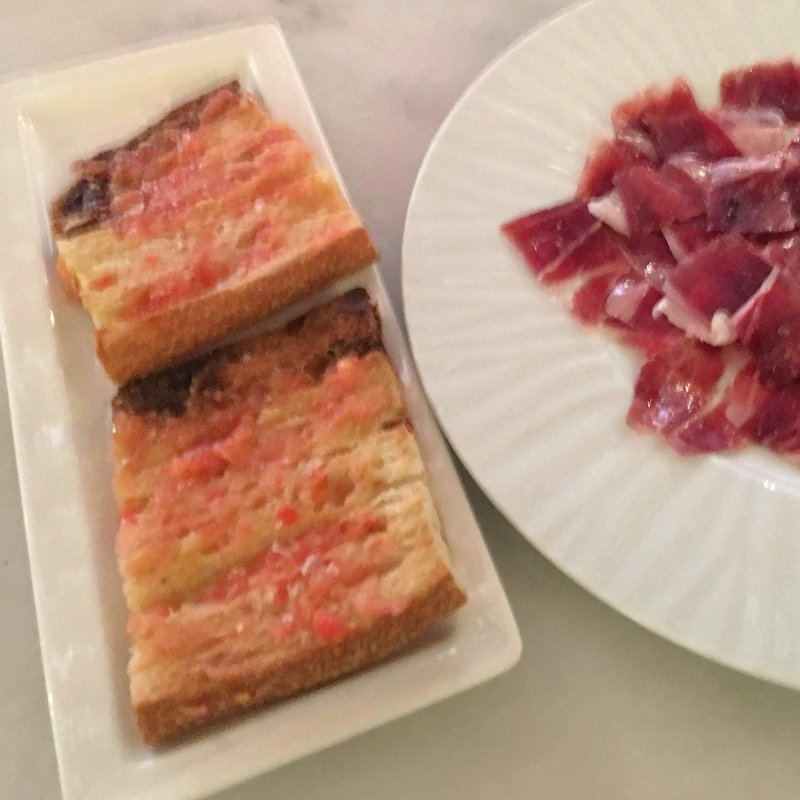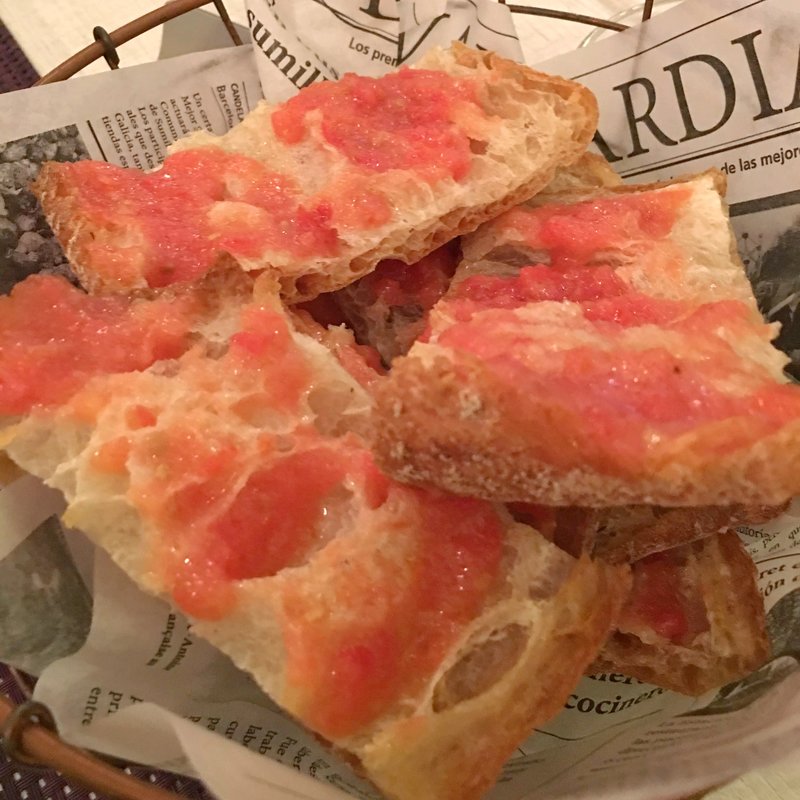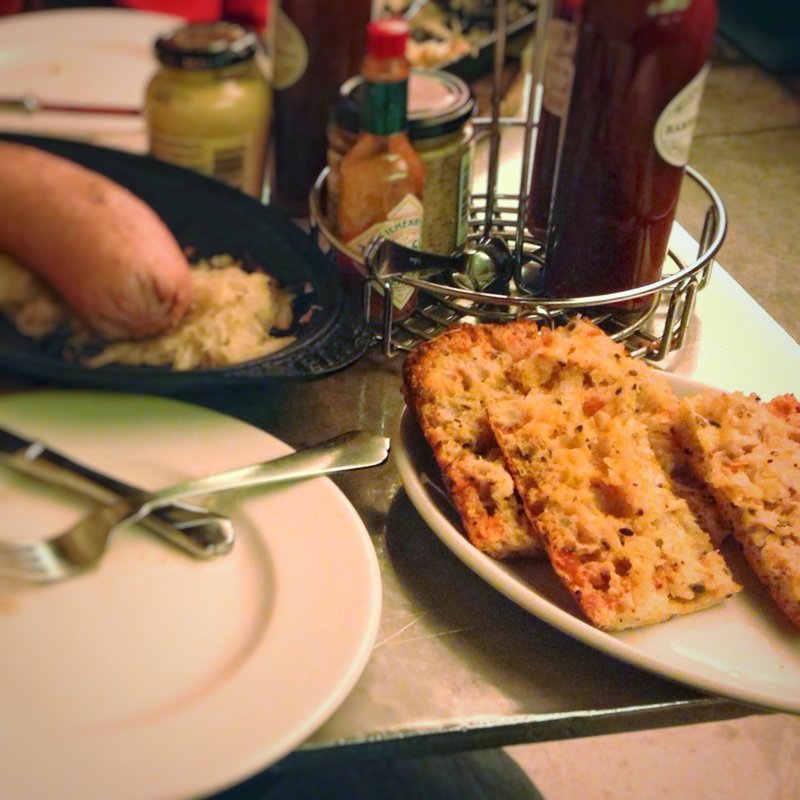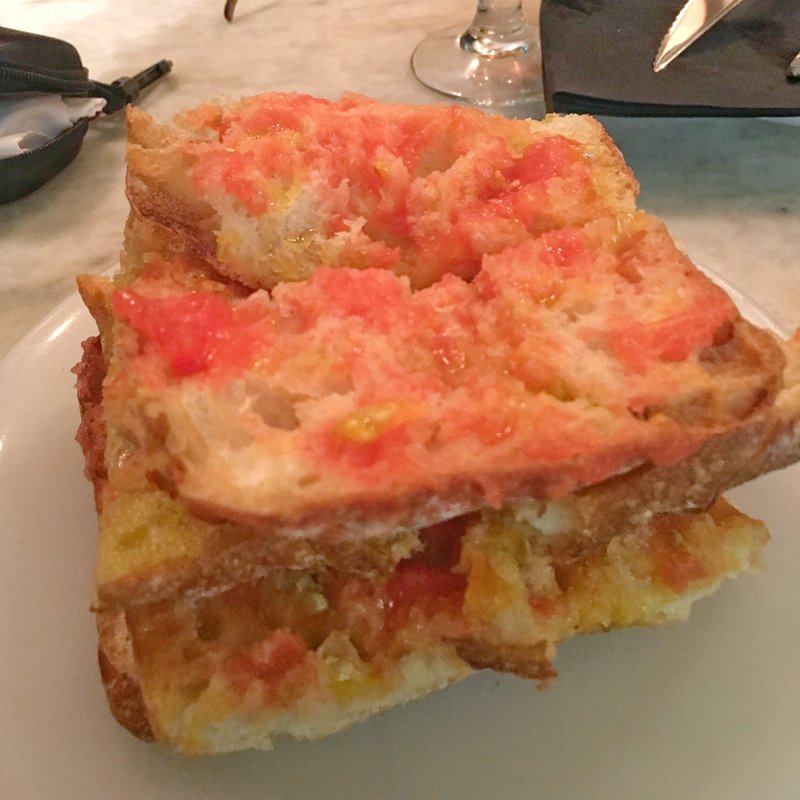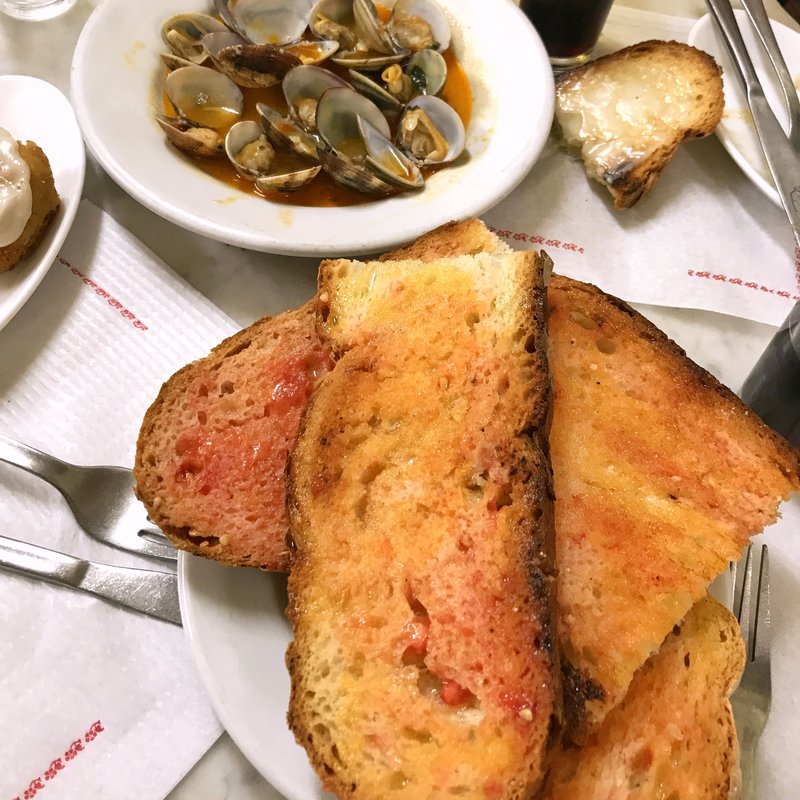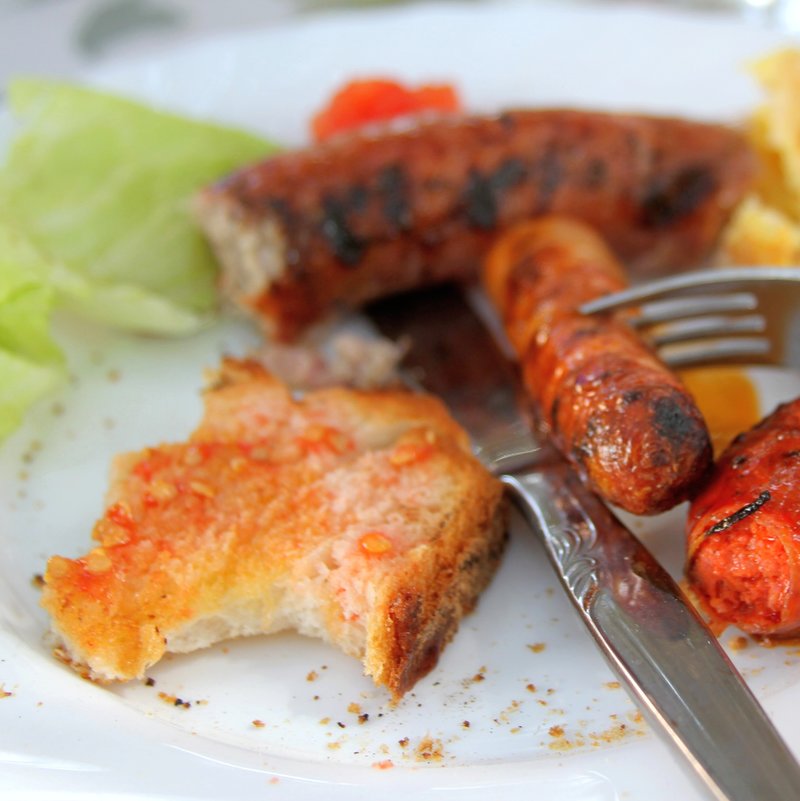Bread rubbed with a half tomato, drizzled with olive oil and topped with salt.
So simple. So healthy. So delicious. And so Catalonian.
It's called "pan con tomate" (that's "pa amb tomàquet" in Catalan and "bread with tomato" in English).
We eat it almost every day when we're in Barcelona or the Catalonian countryside. It's the first thing we order in Spanish restaurants -- before we even look at the menu or wine list. And it’s a staple of our Barcelona Experience.
"Pan con tomate" is very similar or even identical in ingredients to the Italian antipasto bruschetta. The difference is one of tone and feel. While Bruschetta is typically prepared in a kitchen and served occasionally, "pan con tomate" is far more casual and everyday, usually prepared at the table by the person eating it.
Bruschetta is harder to eat, because a large quantity of diced tomatoes tend to be precariously perched on top of narrow slices of bread. I often lose a few cubes of tomato when I eat bruschetta.
"Pan con tomate" is easier to eat, because the ingredients are kind of mashed into and drizzled onto what is usually a larger slice of bread, rather than heaped on top.
And Catalonians eat "pan con tomate" far more often than Italians eat bruschetta. For example, in Catalonia, "pan con tomate" is happily consumed for breakfast, lunch and/or dinner.
Both "pan con tomate" and bruschetta almost certainly emerged sometime in the 17th or early 18th century after Europeans started incorporating Mexican tomatoes into their diets. (The Europeans got domesticated tomatoes from the Aztecs, who got it from the Mayans, who got it from pre-historic South Americans.) The first written recipe for "pan con tomate" that we know of was published in 1884. The use of toasted bread with garlic and olive oil in Europe no doubt pre-dates the Romans -- the Spanish and Italians just started adding tomato to something they were already eating.
The standard way to eat "pan con tomate" is to use a kind of baguette-shaped bread, sliced and brought to the table with whole tomatoes, olive oil and salt. You slice a tomato in half, then rub it on the bread or toast while squeezing it a bit. Then you drizzle olive oil on top and sprinkle salt.
The best way to make "pan con tomate" (i.e. the way Amira makes it) is to use ancient-grain, naturally leavened bread toasted over a wood fire, rubbed with tomato and drizzled with a pressed-garlic infused olive oil and topped with seasalt.
Garlic is a common but not necessary ingredient in Catalonian "pan con tomate," where it is rubbed on the bread before the tomato either in raw or roasted form.
The whole point of "pan con tomate" is extreme compatibility with Catalonian life. It uses ingredients always on hand. And it's a way to avoid wasting old bread. You can easily compensate for the dryness of the bread with the amount of tomato and olive oil you put on.
"Pan con tomate" is super flexible. You can put cheese on top, or -- my favorite -- jamón ibérico. You can and should eat it with tortilla, which is what Spaniards call a potato omelette ("tortilla española" or "tortilla de patatas").
In fact, "pan con tomate" pairs perfectly with all the Catalonian things -- cava, ham, cheese, stews, seafood, sausages and more. It's Catalonian, of course, but also gloriously Mediterranean.
I love bread. And I'm very gluten tolerant. But "pan con tomate" is easily the healthiest way to eat bread. The tomatoes, garlic and olive oil are extremely good for you.
And "pan con tomate" is charming, too, because it highlights and showcases the work of the farmer -- the quality of the tomatoes and olive oil, plus the quality of the bread, dictate the quality of the "pan con tomate."
In my experience, "pan con tomate" tastes best with family and friends in the shade of an olive tree or grape vines on a breezy late-summer afternoon while gazing across Xare-lo vineyards with Montserrat on the horizon. But it's also delicious everywhere you can get your hands on good bread, tomatoes and olive oil.
You should eat "pan con tomate." -Mike
